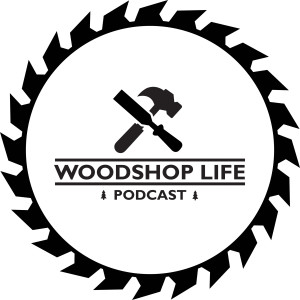Support us on Patreon: https://www.patreon.com/woodshoplife
Guys Questions
1) I’m having trouble getting clean 45 degree angles (or any angle other than 90) on my table saw. I use an Incra Miter 1000. It seems like my workpiece shifts ever so slightly as the wood enters the blade and my miter isn’t clean. I don’t have confidence in the miter stop provided with the miter gauge cause it’s just a small round piece of metal. Any tips on cutting angles with this style miter gauge would be awesome. Also, do you recommend using it on the left or right miter slot of a left tilting blade. Much appreciated. Keep up the good work. -Zach
2) I just got my first Lie-Nielsen plane (#4 bronze body smoother). I've decided it's time to up my sharpening game and purchase some quality stones to sharpen plane irons and chisels. I had pretty much decided on Shapton Waterstones when I ran across their glass stones. The glass stones now seem to be the way to go but I'd like to have your guys take on glass vs. water stones before I pull the trigger. Love the show guys! Thanks and Merry Christmas! - Jeff
Sean's Questions
1) Hello guys, big fan of the podcast, I've listened to all your episodes and look forward to each one. I enjoy the Q&A format.
My question is about a workbench I want to build, more specifically the top. I have no formal workbench right now so I'm looking to build my first. I was initially looking to source some butcher block top and use that but last year I acquired a full 4x8 sheet of 1-1/4" MDF leftover from a jobsite. I had to rip it down and cut it down to make it manageable enough to get it in my car so I have 2 5'x2' pieces of 1-1/4" MDF.
I was planning on laminating these 2 pieces together to get a 5' X 2' X 2-1/2" thick benchtop. I'm wondering what if any issues I may encounter and any tips for gluing up, attaching a vise, etc. I was going to drill dog holes but I recently saw a video from Dave Piccuito at https://youtu.be/DYIwSm2wnAA where he puts in a t-track. I really like how his turned out and was thinking about doing that.
So I was just hoping to get some insight into anything I may want to look out for or be aware of. Pros/cons/thoughts. Thanks for everything you do guys, take care. - Michael
2) On a recent episode, you talked about using your CNC's to cut out jigs, etc. I'm interested in getting a CNC to complement my woodworking, which is a fairly new hobby for me since I retired a couple of years ago. My only real interest is in using it to make jig parts and router templates for things like furniture legs - not interested in creating final products or 3D sculptures with the CNC, nor doing production for products to sale. What are your recommendations (size, features, manufacturers) for a setup that would see light duty limited to this application? I've tried some of the online laser-cutting services - but they can get pricey pretty quick and have limited thicknesses, so I'm interested in my own setup. Price is a big consideration - as I can't see spending 5 grand for such a limited application. Thanks, Scott
Huy's Questions
1) I started woodworking last year, and I've only been using jatoba, African mahogany, hickory, and hard maple. Mostly because I got good deals on Craigslist. Based on what I've heard you guys discussing, those might not be the easiest woods to work with.
My next project is to make a bed for my 4 year old son. What species would make my life easier? I'm in Denver, so cherry isn't all that cheap. Also, any tips on making beds? -aaron
2) I have a commission for a 6’ round 12/4 (poplar but it doesn’t matter) dining table. I’ll fabricate the steel base, but how would you move such a massive piece around the shop? And any recommendations on the glue up? Guy, how do you move your large pieces at the new shop? Thanks gentlemen! Will
Thanks to Maverick Abrasives for sponsoring this episode!


